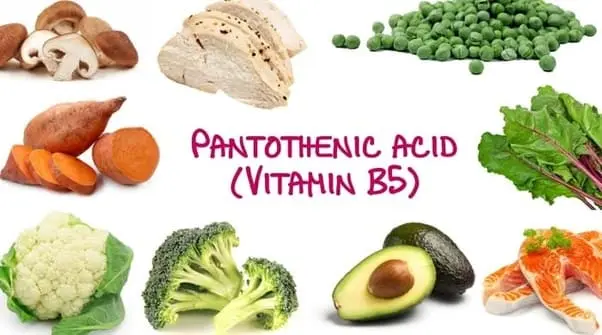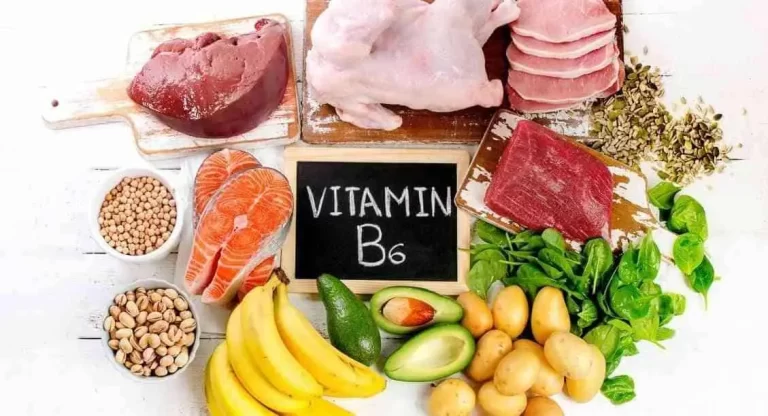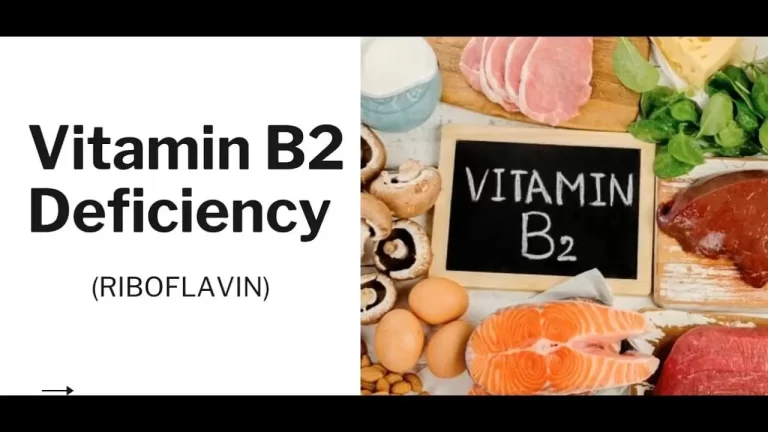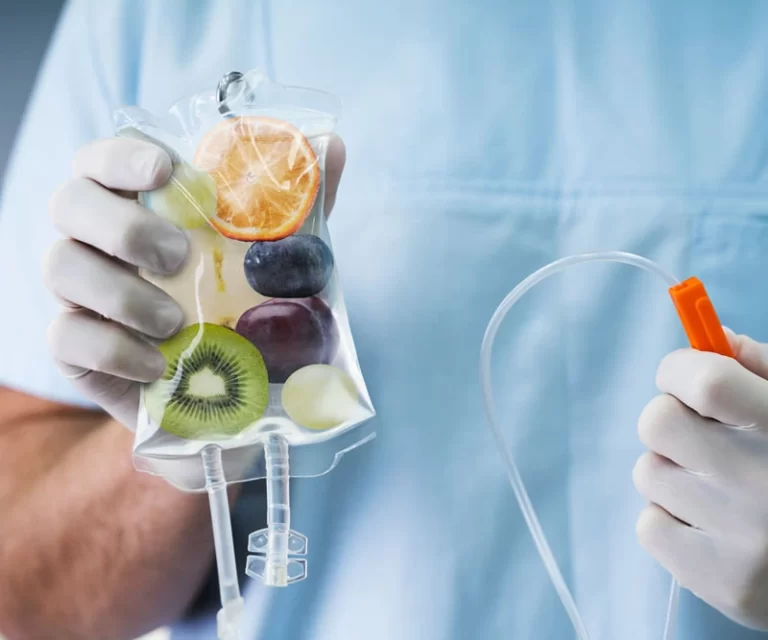Vitamin B5 (Pantothenic Acid)
Introduction
One of the B vitamins and a necessary nutrient is pantothenic acid (vitamin B5). Pantothenic acid is required by all animals for the synthesis of coenzyme.
A (CoA), is necessary for the metabolism of fatty acids, as well as for the synthesis and metabolism of proteins, carbohydrates, and fats.
The combination of pantoic acid and β-alanine is known as pantothenic acid. The term “from everywhere” is derived from the Greek word “πάvτοθεν pantothen,” as pantothenic acid is present in nearly all meals, albeit at minute levels.
In humans, pantothenic acid deficiency is quite uncommon. Because calcium pantothenate is chemically more stable than sodium pantothenate and free pantothenic acid, it is frequently utilized in dietary supplements and animal feed, resulting in a longer product shelf life.
Definition
Among the B vitamins, pantothenic acid is a water-soluble vitamin. It is made from pantoic acid and the amino acid β-alanine (see the figures for coenzyme A’s structure and production).
Pantothenic acid is a single chemical component, in contrast to vitamins K or E, which are found in a variety of chemically related forms known as vitamers. It is a precursor to coenzyme A (CoA), an essential component for numerous enzyme activities.
Use in Biosynthesis of Coenzyme A
- Through a five-step process, pantothenic acid serves as a precursor to CoA. Pantothenic acid, cysteine, and four ATP equivalents are needed for biosynthesis (see figure).
- The enzyme pantothenate kinase phosphorylates pantothenic acid to 4′-phosphopantothenate. This stage of CoA biosynthesis is committed and necessitates ATP.
- The enzyme phosphopantothenoylcysteine synthetase converts 4′-phosphopantothenate to 4′-phospho-N-pantothenoylcysteine (PPC) by adding a cysteine. The hydrolysis of ATP is combined with this step.
- PPC is converted by phosphopantothenoylcysteine decarboxylase to 4′-phosphopantetheine.
- The enzyme phosphopantetheine adenylyl transferase adenylates phosphopantetheine, or more accurately, AMPylates it, to create dephospho-CoA.
- Ultimately, the enzyme dephosphocoenzyme A kinase phosphorylates dephospho-CoA to coenzyme A. ATP is also needed for this last step.
End-product inhibition, which means that CoA is a competitive inhibitor of pantothenate kinase, the enzyme in charge of the first step, suppresses this route.
The citric acid cycle’s reaction mechanism requires coenzyme A. This is the body’s main catabolic pathway and is necessary for converting lipids, amino acids, and carbohydrates—building blocks of cells—into fuel.
For pyruvate to enter the tricarboxylic acid cycle (TCA cycle) as acetyl-CoA and for α-ketoglutarate to change into succinyl-CoA inside the cycle, CoA is necessary for energy metabolism.
Additionally, acylation and acetylation—are, for example, responsible for a number of enzyme activities as well as signal transduction.
Apart from its CoA function, this chemical can also serve as an acyl group carrier, forming acetyl-CoA and other related compounds.
This mechanism allows carbon atoms to be transported within the cell. In order for acyl carrier protein (ACP), which is necessary for fatty acid synthesis, to be formed, CoA is also needed.
There are connections between its production and other vitamins like thiamin and folic acid.
Dietary Recommendations
In 1998, the US Institute of Medicine (IOM) revised the Recommended Dietary Allowances (RDAs) and Estimated Average Requirements (EARs) for B vitamins.
Pantothenic acid EARs and RDAs could not be established at that time due to insufficient data. In situations like this, the Board establishes Adequate Intakes (AIs) with the knowledge that AIs could eventually be superseded by more precise data.
The recommended daily dose of AI for adults and teenagers 14 years of age and older is 5 mg. This was partly based on the finding that the bioavailability of food-bound pantothenic acid was approximately 50% and the urine excretion was approximately 2.6 mg/day for a typical diet.
Pregnancy-related AI is 6 mg/day. The daily AI for lactation is 7 mg. The daily AI for infants under 12 months of age is 1.8 mg.
The AI rises with age in children aged 1 to 13 from 2 to 4 mg/day. Dietary Reference Intakes (DRIs) is the term used to refer to the EARs, RDAs, AIs, and ULs that have been taken together.
Pantothenic acid is not included in the analysis of the food composition data and food consumption survey findings used by the US Department of Agriculture to determine the average consumption of numerous nutrients.
Adult daily intakes are estimated in less formal ways to be between 4 and 7 mg. The combined collection of data is referred to as Dietary Reference Values by the European Food Safety Authority (EFSA).
Which uses Population Reference Intake (PRI) rather than RDA and Average Requirement (EAR) in place of EAR. The definitions of UL and AI are the same as in the US.
The Adequate Intake (AI) for both men and women over the age of 11 is 5 mg per day. Pregnancy AI dosage is 5 mg/day; lactation AI is 7 mg/day. The AI is 4 mg/day for kids between the ages of 1 and 10. These AIs resemble the AIs in the US.
| Age group | Age | Adequate intake |
| Infants | 0–6 months | 1.7 mg |
| Infants | 7–12 months | 1.8 mg |
| Children | 1–3 years | 2 mg |
| Children | 4–8 years | 3 mg |
| Children | 9–13 years | 4 mg |
| Adult men and women | 14+ years | 5 mg |
| Pregnant women | (vs. 5) | 6 mg |
| Breastfeeding women | (vs. 5) | 7 mg |
Safety
When there is enough data to support a claim, the IOM establishes acceptable upper intake levels (ULs) for vitamins and minerals.
Since there is no human data regarding the negative effects of high dosages of pantothenic acid, there is no upper limit of tolerance.
After reviewing the safety question, the EFSA came to the same decision as the US: there wasn’t enough data to establish a pantothenic acid UL.
Labeling Requirements
To comply with US regulations for food and dietary supplement labeling, the quantity in a serving is stated as a percentage of Daily Value (%DV).
100% of the Daily Value for pantothenic acid was 10 mg for labeling purposes, however beginning of May 27, 2016, it was changed to 5 mg to conform to the AI.
Firms with annual food sales of at least US$10 million were required to comply with the new labeling laws by January 1, 2020, and firms with lower volume food sales had to comply by January 1, 2021. Reference Daily Intake provides a table with the current and old adult daily values.
Sources
Dietary
Foods derived from animals, such as dairy products and eggs, are a good source of pantothenic acid.
Good plant sources include potatoes, tomato-based products, oat cereals, sunflower seeds, and avocados. Another excellent source is mushrooms.
Another source of the vitamin is whole grains, however since pantothenic acid is found in the outer layers of whole grains, milling them to form white rice or white flour removes much of the acid.
Alfalfa, cereal, fish meal, peanut meal, molasses, rice bran, wheat bran, and yeasts are the main ingredients in animal feeds.
Supplements
Pantothenol, often spelled panthenol, is a shelf-stable analog that, when eaten, transforms into pantothenic acid and is frequently used in dietary supplements.
Because calcium pantothenate, a salt, resists deterioration from heat, acid, and alkali better than pantothenic acid, it may find application in manufacturing.
There is no proof that pantothenic acid in such high doses is beneficial, despite the fact that some dietary supplement products contain up to 1,000 mg of the vitamin (200 times the adult Adequate Intake level).
Pantothenic acid supplements offer a plethora of benefits, but there isn’t enough proof to back up any of them.
Pantothenic acid is not the same as pantethine, which is a dietary supplement consisting of two molecules of pantothenic acid connected by a disulfide bridge.
Pantethine is a high-dose supplement (600 mg) that may be useful in reducing blood levels of low-density lipoprotein (LDL), a risk factor for cardiovascular disorders.
However, because of its uncertain long-term consequences, its use needs to be monitored by a doctor. Pantothenic acid dietary supplements do not affect LDL in the same way.
Fortification
The Global Fortification Data Exchange states that since pantothenic acid insufficiency is so uncommon, no nation mandates the fortification of food.
Absorption, Metabolism and Excretion
Most pantothenic acid that is present in food is either attached to an acyl carrier protein (ACP) or exists as CoA.
This vitamin needs to be changed into free pantothenic acid in order for the intestinal cells to absorb it. CoA and ACP are hydrolyzed into 4′-phosphopantetheine in the intestinal lumen. After that, pantetheine is produced by dephosphorylating 4′-phosphopantetheine.
A saturable, sodium-dependent active transport mechanism is responsible for the absorption of free pantothenic acid into intestinal cells.
When this route reaches saturation at high consumption levels, some pantothenic acid may also be absorbed passively.
Overall, the absorption rate drops to 10% as consumption increases tenfold. Urine is the excretion of pantothenic acid.
This happens upon its release from the CoA. Urinary levels are approximately 2.6 mg/day, but when individuals in multi-week experimental conditions were fed diets devoid of the vitamin, urinary concentrations dropped to almost nothing.
The intestinal enzyme pantothenate then hydrolyzes pantothenic to produce free pantothenic acid
Deficiency
Human pantothenic acid insufficiency is extremely uncommon and poorly understood. Almost all symptoms of the few cases of deficiency have been observed (World War II prisoners of war, starving victims, or small-scale volunteer trials).
Have been resolved by oral pantothenic acid administration. The deficiency’s symptoms resemble those of other vitamin B deficits.
Low CoA levels cause reduced energy output, which could produce weariness, apathy, and irritable symptoms.
Due to the impairment of acetylcholine synthesis, neurological symptoms such as paresthesia, cramping in the muscles, and numbness in the hands and feet can also arise in a deficiency.
Abdominal cramps, nausea, vomiting, lethargy, restlessness, and sleep difficulties are possible further symptoms.
The neurological, gastrointestinal, and immunological systems, as well as the growth rate, food intake, skin lesions, hair coat abnormalities, and changes in lipid and carbohydrate metabolism, can all be symptoms in animals.
Because hair color loss in rodents can occur, pantothenic acid has been marketed as a dietary supplement that may help treat or prevent graying hair in people (despite the lack of data from human trials supporting this claim).
Urinary excretion during a 24-hour period or whole blood concentration can be used to determine the pantothenic acid status.
In humans, urine excretion of less than 4.56 mmol/day and whole blood levels less than 1 μmol/L are regarded as low.
Animal Nutrition
Animal feed additives approved by the European Food Safety Authority (EFSA) include calcium pantothenate and dexpanthenol (D-panthenol).
For pigs, the recommended dosage of supplements is 8–20 mg/kg; for poultry, it is 10–15 mg/kg; for fish, it is 30–50 mg/kg; and for pet feed, it is 8–14 mg/kg.
These concentrations are suggested; they are meant to exceed perceived requirements. There is some evidence that pantothenic acid supplementation raises the content of the vitamin in human tissues—meat and eggs, for example—but there are no safety concerns for consumers.
There is no known pantothenic acid dietary requirement for ruminant species. Ruminal microbes appear to synthesize 20–30 times more pantothenic acid than is found in food.
It has been calculated that the amount of pantothenic acid produced by microbial net synthesis in the rumen of steer calves is 2.2 mg/kg of digestible organic matter ingested daily.
The growth performance of cattle in feedlots was not enhanced by pantothenic acid supplementation at five to ten times the theoretical requirement.
Synthesis
Biosynthesis
Aspartate and a precursor to valine, two amino acids, are used by bacteria to make pantothenic acid. β-alanine is produced from aspartate.
Valine’s amino group is replaced by a keto-moiety to generate α-ketoisovalerate. This then forms α-ketopantoate after a methyl group is transferred.
And D-pantoate (also called pantoic acid) after reduction. Then, pantothenic acid is formed by the condensation of β-alanine and pantoic acid (see figure).
Industrial Synthesis
For pantothenic acid to be synthesized industrially, formaldehyde and isobutyraldehyde must first undergo an aldol condensation.
The derivative of cyanohydrin is produced from the resultant hydroxypivaldehyde. It produces racemic pantolactone when cyclized.
The first publication of this series of reactions was out in 1904. The vitamin synthesis is finished by treating the calcium or sodium salt of β-alanine after the lactone is resolved, for example, with quinine.
History
The word “vitamin” comes from the Polish biochemist Casimir Funk, who in 1912 discovered a complex of water-soluble micronutrients necessary for life, all of which he assumed to be amines.
This is how the term “vitamin” was created. Upon subsequent discovery that this assumption was false, the “e” was removed from the word, leading to the phrase “vitamin”.
Elmer McCollum referred to these as fat-soluble vitamins A and water-soluble vitamins B in his alphabetical system of vitamin naming.
Pantothenic acid was designated as vitamin B5, and eight chemically different, water-soluble B vitamins were eventually identified and numbered.
Roger J. Williams demonstrated in 1933 that pantothenic acid was necessary for yeast development, proving the nutrient’s essential character. It was shown by Elvehjem and Jukes to be a growth and anti-dermatitis factor in chickens three years later.
Williams gave the substance the moniker “pantothenic acid,” derived from the Greek word pantothen, meaning “from everywhere.”
The basis for his decision was that he tested nearly every food and discovered its presence. In 1940, Williams proceeded to ascertain the chemical structure.
Fritz Lipmann, whose work was published in 1946, shared the 1953 Nobel Prize in Physiology or Medicine “for his discovery of co-enzyme A and its importance for intermediary metabolism.”
FAQ
What is vitamin B5 used for?
Vitamin B5 is essential for red blood cell production, sex, and stress-related hormones generated by the adrenal glands, which are tiny glands located atop the kidneys. It also plays a part in the metabolism of fats and carbohydrates for energy.
What is the name of the vitamin B5 deficiency?
Hypovitaminosis B5 is the medical term for vitamin B5 deficiency. Since it’s in almost every item, it only happens in extremely rare cases of life-threatening starvation.
Does vitamin B5 help clear skin?
Breakouts can result from inadequate intake of vitamin B5, even if you don’t have a deficiency. Reintroducing it, nevertheless, has been clinically shown to aid in the development of clear skin.
Is vitamin B5 good for hair?
For healthy hair, vitamin B5, sometimes referred to as calcium pantothenic acid, is essential. In order to encourage healthy hair growth and stop hair loss, it helps to strengthen and nourish hair follicles.
Who needs vitamin B5?
Within the B group of vitamins, vitamin B5 is a water-soluble vitamin. It breaks down carbs and lipids to help produce energy. Its advantages include supporting liver, eyes, hair, and skin health. B5 is necessary for the synthesis and metabolism of proteins, lipids, and coenzyme A in humans.
Is vitamin B3 and B5 the same?
Vitamin B5 aids in hydration and nourishment, vitamin B12 acts on a cellular level to boost wound healing and stimulate cell regeneration, and vitamin B3 decreases inflammation, symptoms of aging, and blemishes, and promotes the function of the skin’s barrier.
Can I take B5 every day?
Adults should take 5 milligrams of pantothenic acid per day. Six milligrams should be taken daily throughout pregnancy; seven milligrams should be taken daily during nursing. The recommended dosage for kids varies based on their age.








One Comment